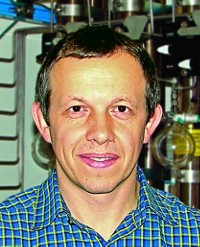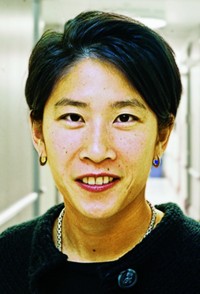Advertisement
Grab your lab coat. Let's get started
Welcome!
Welcome!
Create an account below to get 6 C&EN articles per month, receive newsletters and more - all free.
It seems this is your first time logging in online. Please enter the following information to continue.
As an ACS member you automatically get access to this site. All we need is few more details to create your reading experience.
Not you? Sign in with a different account.
Not you? Sign in with a different account.
ERROR 1
ERROR 1
ERROR 2
ERROR 2
ERROR 2
ERROR 2
ERROR 2
Password and Confirm password must match.
If you have an ACS member number, please enter it here so we can link this account to your membership. (optional)
ERROR 2
ACS values your privacy. By submitting your information, you are gaining access to C&EN and subscribing to our weekly newsletter. We use the information you provide to make your reading experience better, and we will never sell your data to third party members.
Materials
ACS Award In Colloid & Surface Chemistry
by Mitch Jacoby
January 23, 2012
| A version of this story appeared in
Volume 90, Issue 4
Sponsored by Procter & Gamble
For more than 25 years,
Experts in surface chemistry hold Hamers in high esteem for the breadth of his scientific contributions, which often center on devising methods for functionalizing surfaces. John N. Russell Jr., head of surface chemistry at the Naval Research Laboratory in Washington, D.C., regards Hamers as “one of the premier surface chemists of his generation.”
In recent years, Hamers’ research group has focused on sorting out mechanistic details of novel chemical and photochemical processes to control the surface chemistry and electronic properties of a variety of materials. Examples include layers of molecules adsorbed on diamond, carbon nanofibers, amorphous carbon, silicon, and metal oxides.
In silicon surface chemistry, for example, Hamers’ team devised a direct method for covalently modifying silicon with DNA. That work led to the discovery that grafting molecular monolayers to diamond via photochemistry results in functionalized surfaces with exceptional chemical stability and chemical and biochemical specificity. A key piece of that discovery was recognizing that photoelectron emission was responsible for initiating the grafting process. Shortly thereafter, Hamers and coworkers showed that photochemical grafting of molecular layers can also be used to functionalize metal oxides and nanostructured carbon materials.
Those advances touched off a major effort to exploit carbon and other materials as novel platforms for building biomolecular surface arrays. These arrays, in turn, have been incorporated into new types of chemical and biological sensors that directly convert molecular detection events into electrical signals.
In related work, the Wisconsin researcher’s team made the first biologically sensitive field-effect transistors by using diamond thin films for real-time detection of antibody-antigen interactions. And in other work, Hamers’ team demonstrated that vertically aligned carbon nanofibers can be fashioned into yet another novel type of chemical sensor. The team showed that these nanofibers are a reactive form of carbon endowed with unusual electron-transfer properties associated with exposed graphite edges along the nanofiber sidewalls.
In the view of UW Madison chemistry professor John C. Wright, Hamers’ contributions to surface chemistry are especially valuable because his methods are general and applicable to many surfaces. They are also central to controlling chemical selectivity and other properties of materials used in fuel cells, energy storage devices, and biomaterial interfaces. “Hamers’ work moves surface chemistry from laboratory demonstration to practical applications,” Wright says.
Hamers, 53, completed his undergraduate studies at UW Madison in 1980 and earned a Ph.D. in physical chemistry from Cornell University in 1986. He then became a research staff member at IBM’s T. J. Watson Research Center, in Yorktown Heights, N.Y., where he worked until taking a faculty position in the UW Madison chemistry department in 1990.
Hamers has mentored more than 65 graduate students and postdoctoral researchers. He has authored some 250 papers in scholarly journals and holds 10 U.S. patents. He is a fellow of the American Association for the Advancement of Science and a recipient of the ACS Arthur W. Adamson Award for Distinguished Service in the Advancement of Surface Chemistry.
Hamers will present the award address before the ACS Division of Colloid & Surface Chemistry.






Join the conversation
Contact the reporter
Submit a Letter to the Editor for publication
Engage with us on Twitter